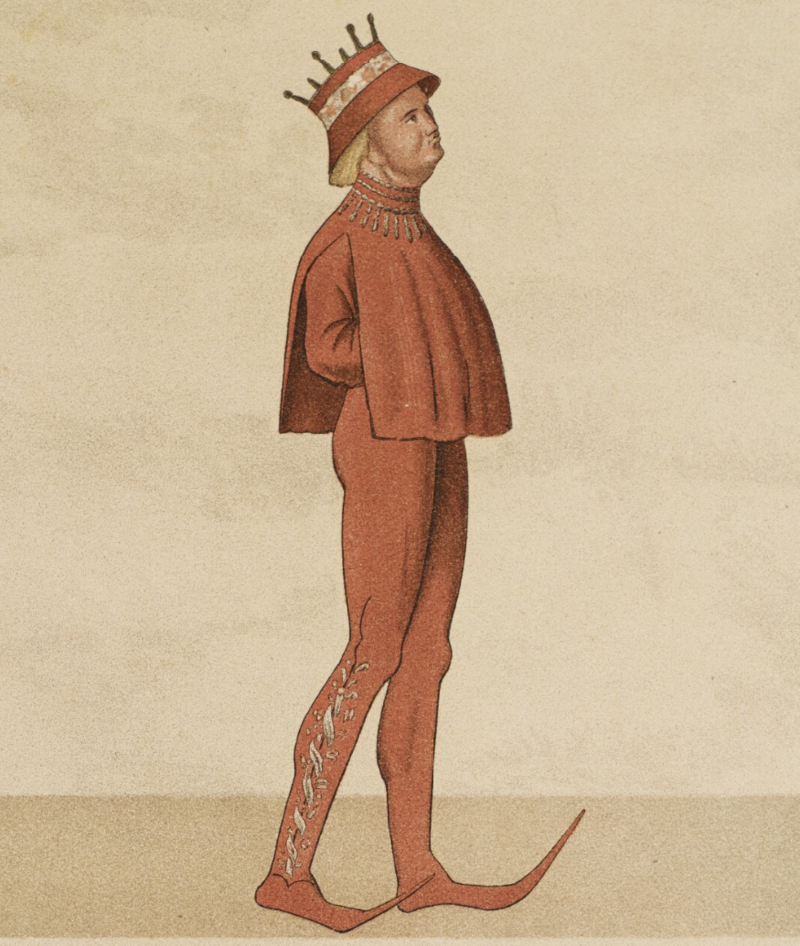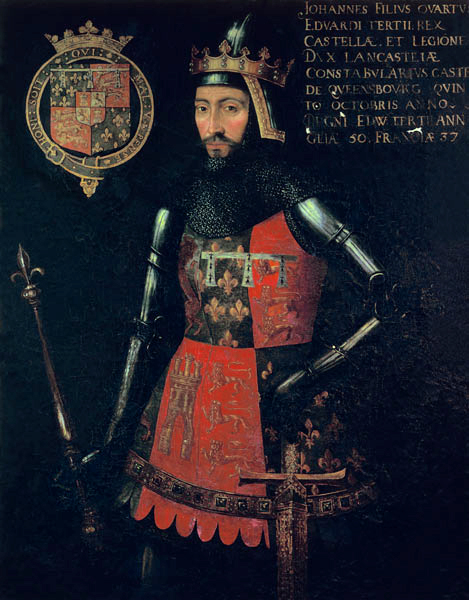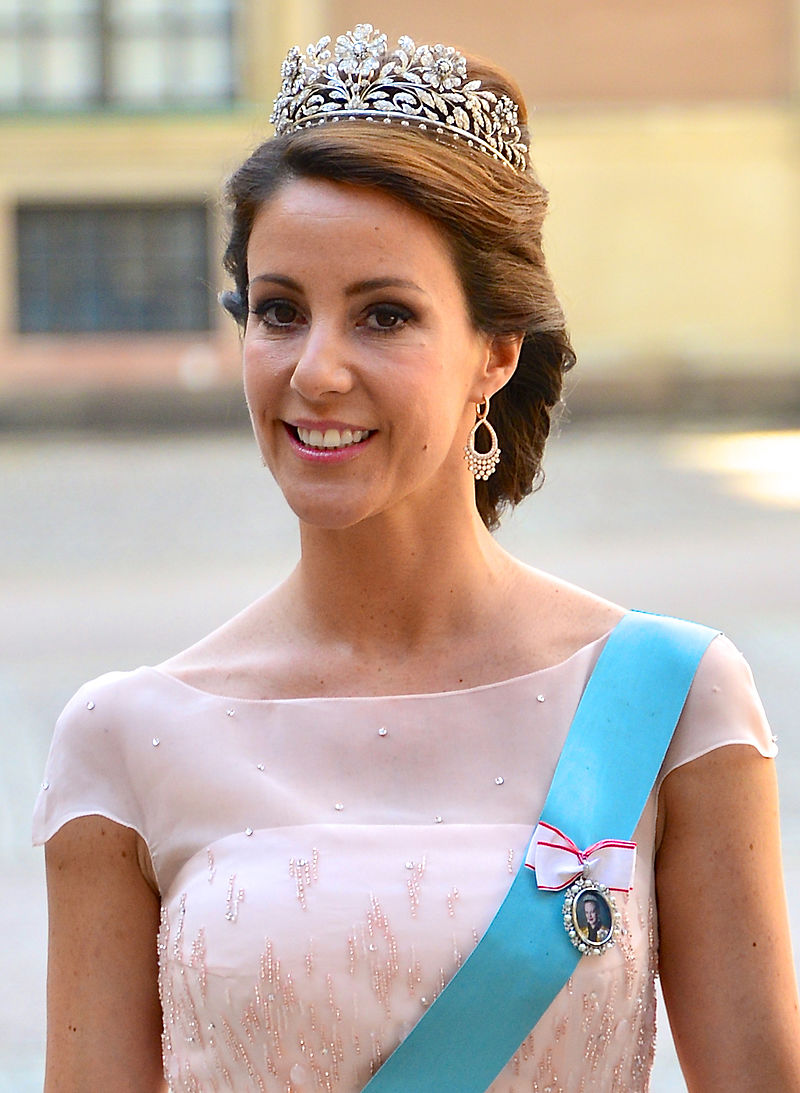© Unofficial Royalty 2025

Mary, Queen of Scots; Credit – Wikipedia
February 8, 1587 – Execution of Mary, Queen of Scots at Fotheringay Castle in Northamptonshire, England; buried first at Peterborough Cathedral in Peterborough, England, moved to Westminster Abbey in London, England by her son King James I of England
The only surviving child of James V, King of Scots and Marie of Guise, Mary became Queen of Scots when she was six days old, upon the death of her father at the age of 30. Her father was the son of James IV, King of Scots and Margaret Tudor, eldest daughter of King Henry VII of England. Mary was married three times, to King François II of France, her first cousin Henry Stuart Darnley, and James Hepburn, 4th Earl of Bothwell. She had her only child, James VI, King of Scots, with her second husband Lord Darnley. James VI succeeded the childless Queen Elizabeth I of England. Through her son, Mary, Queen of Scots is the ancestor of the current British royal family and many other European royal families. Following an uprising, Mary was forced to abdicate in favor of her one-year-old son. After an unsuccessful attempt to regain the throne, she fled to England seeking the protection of her first cousin once removed Queen Elizabeth I. Mary had once claimed the English throne and was considered the legitimate sovereign of England by many English Catholics. Elizabeth had confined Mary in various castles and manor houses in England. After eighteen and a half years in captivity, Mary was found guilty of plotting to assassinate Elizabeth in 1586 and was beheaded the following year at Fotheringhay Castle.
Unofficial Royalty: Execution of Mary, Queen of Scots
Unofficial Royalty: Mary, Queen of Scots
February 8, 1676 – Death of Alexei I, Tsar of All Russia in Moscow, Russia; buried at the Cathedral of the Archangel in the Moscow Kremlin
Alexei was the son of the first Romanov ruler, Michael I, Tsar of All Russia. Sixteen-year-old Alexei succeeded his father upon his death in 1645. In 1648, Alexei married Maria Ilyinichna Miloslavskaya. They had thirteen children including Feodor III, Tsar of All Russia and Ivan V, Tsar of All Russia. In 1669, Alexei’s wife Maria Ilyinichna Miloslavskaya died due to childbirth complications. Alexei’s only surviving sons were the future Tsars, Feodor III, who was disabled by an unknown disease that left him disfigured and partially paralyzed, and Ivan V, who had serious physical and mental disabilities. Alexei married again to Natalya Kirillovna Naryshkina and hoped his second marriage would give him a healthy son, and it did, Peter I the Great, Emperor of All Russia. On February 8, 1676, five years after marrying Natalya Kiillovna, Alexei I, Tsar of All Russia died of a heart attack at the age of 46. Coincidentally, two of Alexei’s sons Ivan V and Peter I also died on February 8.
Unofficial Royalty: Alexei I, Tsar of All Russia
February 8, 1696 – Death of Ivan V, Tsar of All Russia in Moscow; buried at the Cathedral of the Archangel in Moscow, Russia
After the death of their elder half-brother Feodor III, Tsar of All Russia, who was disabled by an unknown disease that left him disfigured and partially paralyzed, Ivan and his younger half-brother Peter I (the Great) were co-rulers of Russia. From childhood, Ivan had serious physical and mental disabilities which may have been caused by Down’s Syndrome or a consequence of a disease. 1684, Ivan married Praskovia Feodorovna Saltykova. They had five daughters including Anna Ivanovna, Empress of All Russia. In 1689, 17-year-old Peter overthrew his elder half-sister Sophia Alexeievna who was ruling as Regent. Peter I and Ivan V continued as co-rulers. With Ivan both incapable and disinterested, Peter functioned as though he were the only Tsar, and eventually Ivan became a non-entity in the Russian court. For the last decade of his life, Ivan spent his days with his wife fasting and praying and was completely overshadowed by Peter. By the age of 27, Ivan was senile, paralyzed, and almost blind. He died February 8, 1696, at the age of 29,
Unofficial Royalty: Ivan V, Tsar of All Russia
February 8, 1725 – Death of Peter I (the Great), Emperor of All Russia in St. Petersburg, Russia; buried at the Peter and Paul Cathedral in St. Petersburg, Russia
After the death of their elder half-brother Feodor III, Tsar of All Russia, who was disabled by an unknown disease that left him disfigured and partially paralyzed, Peter and his older half-brother Ivan, who had serious physical and mental disabilities, were co-rulers of Russia. Peter married twice to Eudoxia Feodorovna Lopukhina and then to Marta Samuilovna Skavronskaya, later Catherine I, Empress of All Russia. Peter had fourteen children but only three survived to adulthood including Elizabeth, Empress of All Russia. Upon his half-brother’s death in 1696, Peter assumed complete authority. Peter is perhaps the greatest Romanov ruler. He is known for his modernization reforms and the founding of the city of St. Petersburg. Peter was interested in seafaring and maritime affairs, and he wanted Russia to have a seaport to trade with other maritime nations. He needed a better seaport than Arkhangelsk on the White Sea to the north and closed to shipping during the winter. Previously titled Tsar of All Russia, Peter was officially proclaimed Emperor of All Russia in 1721. During the last two years of his life, Peter suffered from urinary tract problems. In the summer of 1724, doctors performed surgery that released four pounds of blocked urine and Peter remained bedridden until late autumn. On February 8, 1725, Peter I (the Great), Emperor of All Russia died at the age of 52 from a bladder infection.
Unofficial Royalty: Peter I (the Great), Emperor of All Russia
February 8, 1772 – Death of Augusta of Saxe-Gotha-Altenburg, Dowager Princess of Wales, wife of Frederick, Prince of Wales and mother of King George III of the United Kingdom, at Carlton House in London, England; buried at Westminster Abbey in London, England
In 1736, at the age of 16, and still very young for her age, clutching a doll, and knowing no English, Augusta arrived in England for her marriage to Frederick, Prince of Wales, the son of King George II of Great Britain. Frederick and Augusta had nine children including King George III who succeeded his grandfather King George II, and Caroline Matilda, Queen Consort of Denmark whose marriage is a tragic story. In 1751, Augusta’s husband died at the age of 44. At the time of Frederick’s death, his 32-year-old widow was pregnant with her ninth child. Augusta spent her years as a widow raising her nine children and improving the gardens at Kew Palace, a world-class botanical garden. Her eldest son George succeeded his grandfather as king in 1760. Augusta died of throat cancer in 1772, at the age of 52.
Unofficial Royalty: Augusta of Saxe-Gotha-Altenburg, Princess of Wales
February 8, 1792 – Birth of Caroline Augusta of Bavaria, Empress of Austria, fourth wife of Emperor Franz I of Austria, at Mannheim, Electorate of the Palatinate, now in Baden-Württemberg, Germany
Caroline Augusta was the daughter of King Maximilian I Joseph of Bavaria and his first wife Augusta Wilhelmine of Hesse-Darmstadt. In 1808, to prevent Napoleon from arranging a marriage for his heir Crown Prince Wilhelm, King Friedrich I of Württemberg arranged for a marriage of convenience between his son Wilhelm and 16-year-old Caroline Augusta of Bavaria. The marriage was never consummated and the couple lived apart in separate wings in the Royal Palace in Stuttgart, the capital of the Kingdom of Württemberg. After Napoleon’s fall, the marriage was dissolved. In 1816, Caroline Augusta became the fourth wife of the thrice-widowed Franz I, Emperor of Austria. The couple had no children but Caroline was the stepmother to Franz’s numerous children from his second marriage to Maria Theresa of Naples and Sicily. Caroline Augusta devoted herself to charitable activities. Through her efforts, child-care institutions, hospitals, and homes for workers were built. After her husband, Emperor Franz I of Austria died in 1835, Caroline Augusta lived in Salzburg to stay out of the way of her half-sister Sophie who had married Franz’s son Archduke Franz Karl in 1824. Emperor Franz I had been succeeded by his son Ferdinand who abdicated in 1848. At that time, Archduke Franz Karl was persuaded to renounce his succession rights in favor of his eldest son Franz Joseph, who reigned from 1847 – 1916. Caroline Augusta was on good terms with her nephew Franz Joseph and his wife Elisabeth of Bavaria (Sissi), her niece.
Unofficial Royalty: Caroline Augusta of Bavaria, Empress of Austria
February 8, 1857 – Birth of Elisabeth Anna of Prussia, Hereditary Grand Duchess of Oldenburg, first wife of Friedrich August II, Grand Duke of Oldenburg, in Potsdam, Kingdom of Prussia, now in Brandenburg, Germany
In 1878, Elisabeth Anna married the future Friedrich August II, Grand Duke of Oldenburg but she died before he became Grand Duke. The couple was married in a double wedding, along with Princess Charlotte of Prussia and Bernhard, Hereditary Prince of Saxe-Meiningen. Elisabeth Anne and Friedrich had two daughters.
Unofficial Royalty: Elisabeth Anna of Prussia, Hereditary Grand Duchess of Oldenburg
February 8, 1865 – Death of Emma Portman, Baroness Portman, Lady of the Bedchamber to Queen Victoria
Born Emma Lascelles, daughter of Henry Lascelles, 2nd Earl of Harewood, she married Edward Portman, Baron Portman. She served as Lady of the Bedchamber to Queen Victoria from 1837 to 1851. Like several other ladies at court, Emma became involved in the Flora Hastings scandal, spreading the gossip that Lady Flora was pregnant by Sir John Conroy, the Comptroller and Private Secretary to Queen Victoria’s mother The Duchess of Kent. After it was discovered to be untrue, and Lady Flora was suffering from cancer, Emma and the others saw their reputations tarnished greatly. However, Emma weathered the storm and remained a close confidante to Queen Victoria. She stepped down from service in 1851 but was appointed an Extra Lady of the Bedchamber and held that role until her death. Emma Portman, Baroness Portman died on February 8, 1865. The Queen recorded the death in her journal, expressing her shock and sadness at the loss of her friend.
Unofficial Royalty: Emma Portman, Baroness Portman
February 8, 1938 – Death of Prince Nicholas of Greece, son of King George I of Greece, at the Hotel Grande Bretagne in Athens, Greece; buried at the Royal Cemetery, Tatoi Palace, Greece
In 1902, Nicholas married his second cousin Grand Duchess Elena Vladimirovna of Russia, the daughter of Grand Duke Vladimir Alexandrovich of Russia (a son of Alexander II, Emperor of All Russia) and Marie of Mecklenburg-Schwerin. Nicholas and Elena had three daughters including Princess Marina who married Prince George, Duke of Kent. Because of the political situation in Greece, members of the Greek royal family, including Nicholas and his wife, were often in exile. The Greek monarchy was restored in 1935, and Nicholas and Elena returned to Greece the following year. Having suffered from declining health for several years, Prince Nicholas died in 1938 due to atherosclerosis.
Unofficial Royalty: Prince Nicholas of Greece
February 8, 1952 – Death of Hilda of Nassau, Grand Duchess of Baden, daughter of Grand Duke Adolphe of Luxembourg, wife of Grand Duke Friedrich II of Baden, in Badenweiler Baden-Württemberg, Germany; buried in the Grand Ducal Chapel in the Pheasant Garden in Karlsruhe, Baden-Württemberg, Germany
Hilda was the daughter of Adolphe, Duke of Nassau (later Grand Duke of Luxembourg) and Adelheid-Marie of Anhalt-Dessau. In 1885, she married the future and the last Grand Duke Friedrich II of Baden. The couple had no children. As Grand Duchess of Baden, Hilda was a keen supporter of the arts. She often visited museums and exhibitions and helped to promote the arts throughout Baden. She also promoted education and several schools were named in her honor. Hilda’s husband was deposed and forced to abdicate when the German Empire ended in November 1918. Hilda and her husband then lived at their home on the island of Mainau in Lake Constance in Baden-Württemberg, Germany. Hilda was widowed in 1928 and spent the remainder of her life living quietly in Mainau and the surrounding areas. She died on February 8, 1952, at the age of 87.
Unofficial Royalty: Hilda of Nassau, Grand Duchess of Baden
February 8, 1980 – Death of Anna of Ysenburg and Büdingen, Princess of Lippe, second wife of Leopold IV, Prince of Lippe, in Detmold, North Rhine-Westphalia, Germany; buried at Christ Church in Detmold
Anna was the second of the two wives of Leopold IV, the last Prince of Lippe. The couple had one son. Following the German Empire’s defeat in World War I Leopold IV was forced to renounce the throne. However, Leopold negotiated a treaty with the new government allowing his family to remain in Lippe. Anna’s husband Leopold died, aged 78, on December 30, 1949. Anna survived him by thirty-one years, dying on February 8, 1980, in Detmold at the age of 94.
Unofficial Royalty: Anna of Ysenburg and Büdingen, Princess of Lippe
February 8, 1983 – Birth of Elia Zaharia, the former wife of Crown Prince Leka II, pretender to the throne of Albania, in Tirana, Albania
Elia Zaharia, the former wife of Crown Prince Leka II of the Albanians, the current pretender to the former Albanian throne, is the daughter of Gjergj Zaharia, a school teacher and principal, and Yllka Mujo, a well-known Albanian actress. Elia and Crown Prince Leka II were married in a civil ceremony held at the Royal Palace in Tirana, Albania on October 8, 2016. A religious blessing from all the country’s religious leaders followed. Numerous members of foreign noble and royal families attended the wedding. On January 16, 2024, it was announced that Crown Prince Leka and Crown Princess Elia were ending their marriage. The couple divorced on April 5, 2024.
Unofficial Royalty: Crown Princess Elia of Albania
This article is the intellectual property of Unofficial Royalty and is NOT TO BE COPIED, EDITED, OR POSTED IN ANY FORM ON ANOTHER WEBSITE under any circumstances. It is permissible to use a link that directs to Unofficial Royalty.





















